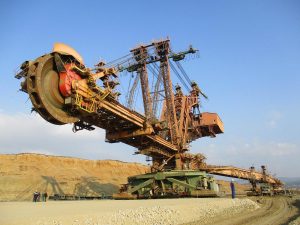Heavy engineering is a type of business that tends to carry high capital costs (capital intensive), high barriers to market entry due to high costs, and low portability. The term “heavy” refers to the fact that the products of “heavy industry” are mainly products such as iron, coal, oil, ships, etc. Today this industry is also referred to as an industry that negatively affects nature in the form of environmental pollution , deforestation, etc.
Perhaps the most difficult legacy, both literally and figuratively, of the Soviet economy was the military-industrial complex. It was very widespread: entire cities were built, metallurgical plants, aluminum smelters, tank manufacturing, chemical plants, or nuclear weapons. The Soviet Union produced more tractors, tanks, missiles, turbines, and heavy military equipment than any other country, including the United States.
In the world from the late 19th century to the mid-20th century, the chemical and electrical industries were more widely developed, they were involved in components of both heavy industry and light industry, which soon began to be referred to the automotive and aviation industries. Modern shipbuilding (since steel has replaced wood) is a heavy industry. The construction of skyscrapers and large dams in large cities developed strongly after the Second World War.
The constant expansion of heavy engineering has resulted in each government globally allocating 60% to 70% of the total budget annually to the infrastructure sector and hindi to english translation app.
These days, developing countries are showing positive results in this industry. This allows us to provide jobs for many people, especially for translators who are involved in the technical translation of documents for the export and import of heavy products. Each country has its own foreign trade policy of import and export, while the translator acts as a link in the mutual agreement between the buyer and the seller. Translations of specifications, terms of payment, terms of delivery, modes of transport and other conditions agreed and specified in the purchase order and shipment of equipment, as well as instructions and manuals of mechanical devices must be as accurate as possible.



